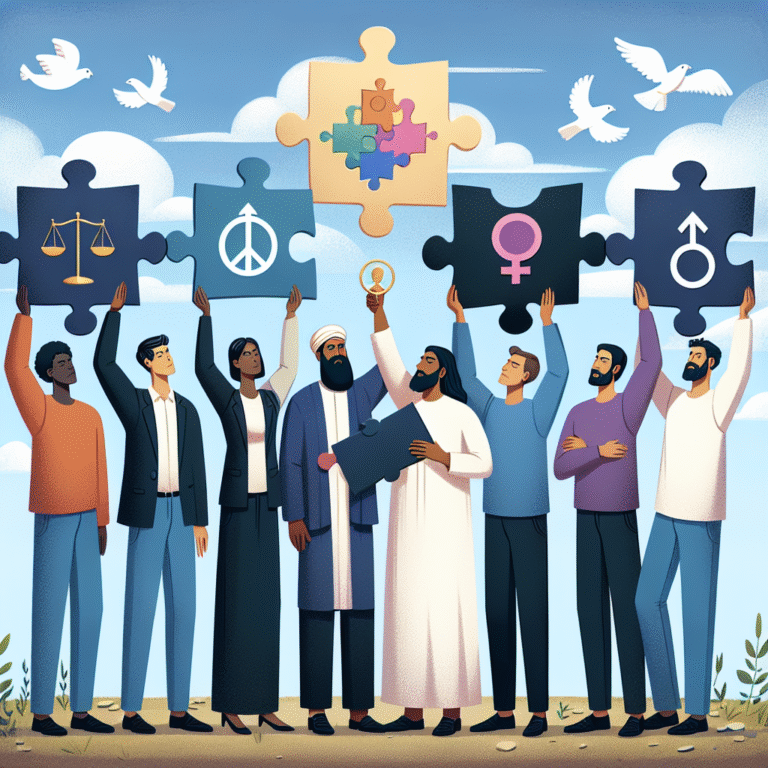
Introduction
In an era where gender equality is paramount, the concept of Global Feminism: How Women Around the World Are Shaping Change transcends borders, cultures, and socio-economic conditions. The idea that women’s rights are human rights is gaining momentum, as women across the globe unite to challenge the status quo, advocate for their rights, and drive systemic change. This movement—rooted in diverse cultural contexts—has enabled women to not only imagine a better world but to take actionable steps toward achieving it. Join us as we explore the remarkable stories of women shaping change across continents, highlighting their strategies, successes, and challenges.
Understanding Global Feminism
What is Global Feminism?
Global feminism refers to the understanding and appreciation of gender issues on an international scale, recognizing that women’s experiences and struggles are interconnected. The movement addresses injustices faced by women globally, urging a solidarity that spans cultural and geographical divides. As women advocate for equal rights, they often collaborate across borders, sharing strategies, resources, and support networks.
The Importance of Intersectionality
At the heart of Global Feminism: How Women Around the World Are Shaping Change lies the principle of intersectionality. Developed by scholar Kimberlé Crenshaw, this concept underscores that women’s experiences are shaped not only by gender but also by race, class, sexual orientation, and more. Understanding these intersecting identities allows for a more inclusive feminist movement, enabling it to address the unique challenges faced by different groups of women.
Key Players in Global Feminism
Grassroots Movements
Grassroots organizations have emerged as key players in the quest for gender equality, often spearheading local efforts that inspire global change. For instance, the #MeToo Movement—which began in the United States—has sparked an international conversation about sexual harassment and assault, leading to similar movements across various countries.
Notable Figures
Prominent activists such as Malala Yousafzai, who advocates for the right to education for girls, and Wangari Maathai, known for her environmental activism and the Green Belt Movement in Kenya, demonstrate how individual efforts contribute to global feminist movements. Their stories provide tangible examples of how women are utilizing their voices to incite change.
Case Study: The Women’s March
One of the most notable examples of global feminism is the Women’s March. Initially sparked by a call to action in the United States, this movement attracted millions of participants worldwide, advocating for various issues including gender equality, reproductive rights, and racial justice. Data collected from the marches indicate a significant increase in awareness around women’s issues and an uptick in women running for political office globally.
| Year | Cities Involved | Estimated Participants |
|---|---|---|
| 2017 | 673 cities | 4.6 million |
| 2018 | 50 cities | 1.2 million |
| 2019 | 20 cities | 500,000 |
| 2020 | Virtual (due to COVID-19) | 1 million+ |
Analysis: The Women’s March is a testament to the power of collective action, highlighting how women across socio-economic backgrounds and nationalities can unite for a common cause, thereby shaping the narrative of global feminism.
The Role of Technology in Feminism
Social Media as a Tool for Mobilization
In the digital age, technology plays a pivotal role in global feminism. Social media platforms not only spread awareness but also mobilize action. For example, the Bring Back Our Girls campaign gained international attention after the abduction of schoolgirls in Nigeria, showcasing how digital activism can foster global solidarity.
Online Communities
Online communities provide a safe space for women from different backgrounds to share their stories, support each other, and organize efforts. Platforms like Facebook, Twitter, and Instagram have become vital for transnational feminists, allowing the exchange of ideas and strategies.
Challenges Facing Global Feminism
Cultural Barriers
Despite its positive momentum, Global Feminism: How Women Around the World Are Shaping Change faces cultural barriers. In many parts of the world, traditional norms and patriarchal structures hinder women’s emancipation. Understanding these cultural contexts is crucial for creating effective interventions that resonate with local communities.
Funding and Resources
Many grassroots organizations struggle with limited funding, which can hinder their ability to enact change. Identifying mechanisms for sustainable funding, such as collaborations with NGOs or private sectors, must be a priority for fostering global feminist initiatives.
The Future of Global Feminism
Education and Empowerment
Education remains a cornerstone in the fight for women’s rights. Organizations like Girls Who Code focus on empowering young women through education in technology—an area where women are historically underrepresented.
Legislation and Policy Changes
Advocating for policy changes at national and international levels is another essential component of global feminism. Women’s groups lobby for reforms in laws related to reproductive rights, domestic violence, and equal pay, influencing politicians to prioritize gender equity.
Conclusion
The narrative of Global Feminism: How Women Around the World Are Shaping Change is rich with stories of resilience, solidarity, and progress. Through the amalgamation of grassroots movements, technological advancements, and a strong emphasis on education, women are reshaping the discourse on gender equality globally. The future looks promising, but the journey is far from over. It calls for collective commitment, continued advocacy, and a relentless pursuit of change.
FAQs
1. What is global feminism?
Global feminism is a movement emphasizing the interconnectedness of women’s issues worldwide, advocating for women’s rights and gender equality on a global scale.
2. How can I get involved in global feminism?
You can get involved by joining local organizations, participating in awareness campaigns, supporting female-led businesses, and utilizing social media platforms to amplify women’s voices.
3. What challenges do women face in the global feminist movement?
Challenges include cultural barriers, insufficient funding, lack of representation in leadership roles, and societal norms that affect women’s rights.
4. How does intersectionality play a role in global feminism?
Intersectionality highlights the diverse experiences of women based on their race, class, sexual orientation, and other identities, ensuring that feminism addresses the unique challenges faced by different groups.
5. What is the significance of grassroots movements in global feminism?
Grassroots movements serve as crucial catalysts for local and global change, enabling women to advocate for rights, challenge societal norms, and often inspire broader, international discussions.

















